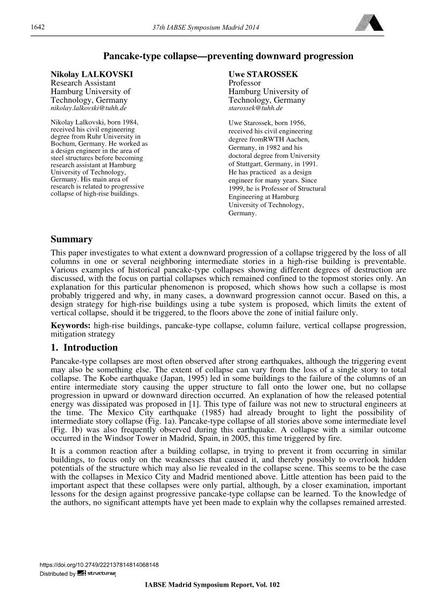Pancake-type collapse—preventing downward progression

|
|
|||||||||||
Détails bibliographiques
| Auteur(s): |
Nikolay Lalkovski
Uwe Starossek |
||||
|---|---|---|---|---|---|
| Médium: | papier de conférence | ||||
| Langue(s): | anglais | ||||
| Conférence: | IABSE Symposium: Engineering for Progress, Nature and People, Madrid, Spain, 3-5 September 2014 | ||||
| Publié dans: | IABSE Symposium Madrid 2014 | ||||
|
|||||
| Page(s): | 1642-1649 | ||||
| Nombre total de pages (du PDF): | 8 | ||||
| Année: | 2014 | ||||
| DOI: | 10.2749/222137814814068148 | ||||
| Abstrait: |
This paper investigates to what extent a downward progression of a collapse triggered by the loss of all columns in one or several neighboring intermediate stories in a high-rise building is preventable. Various examples of historical pancake-type collapses showing different degrees of destruction are discussed, with the focus on partial collapses which remained confined to the topmost stories only. An explanation for this particular phenomenon is proposed, which shows how such a collapse is most probably triggered and why, in many cases, a downward progression cannot occur. Based on this, a design strategy for high-rise buildings using a tube system is proposed, which limits the extent of vertical collapse, should it be triggered, to the floors above the zone of initial failure only. |
||||
| Mots-clé: |
bâtiments hauts
|
||||
